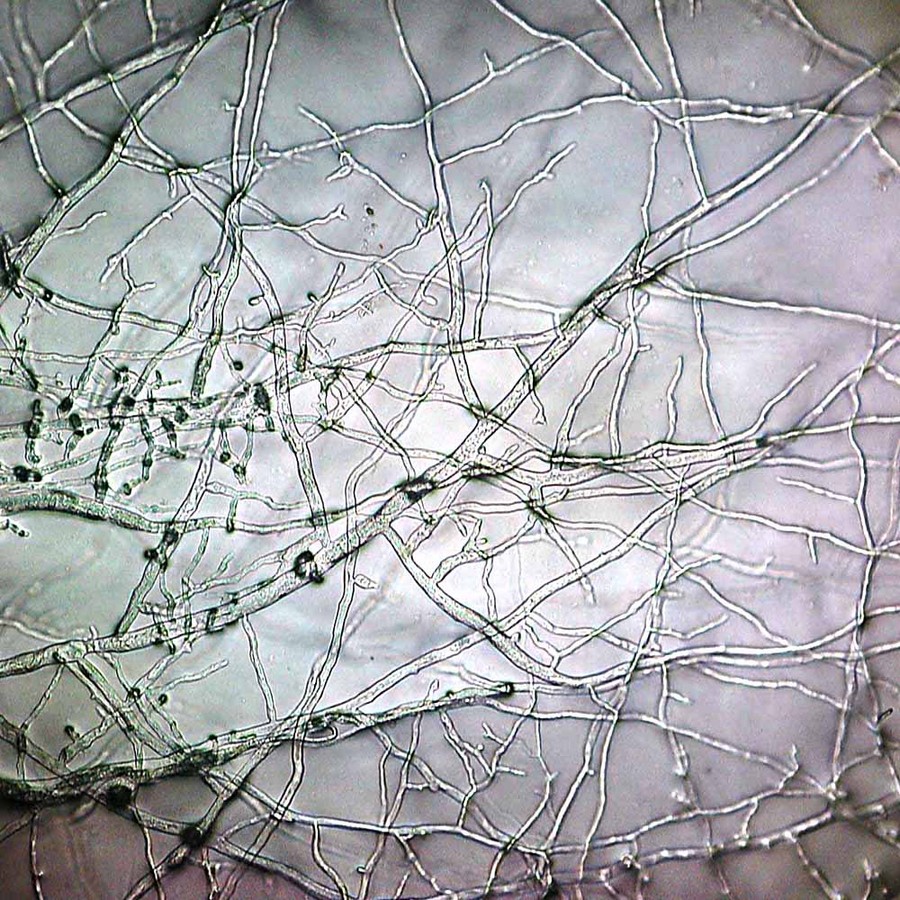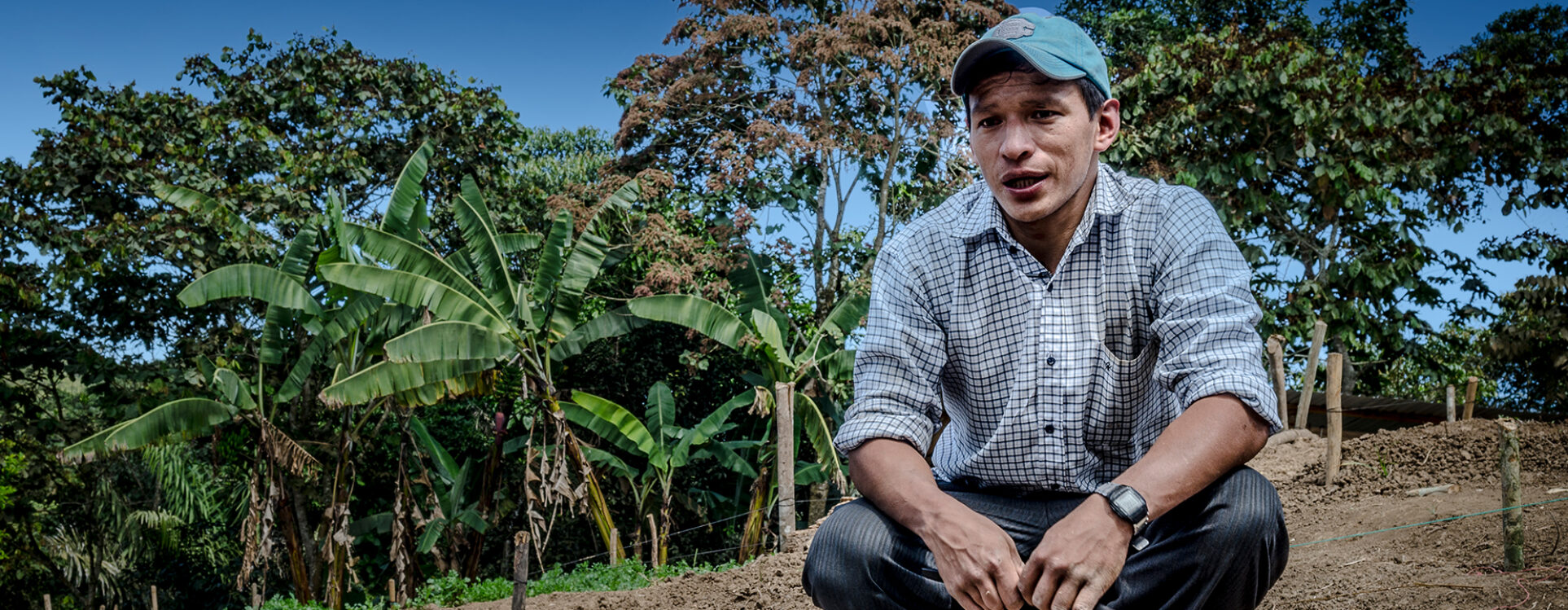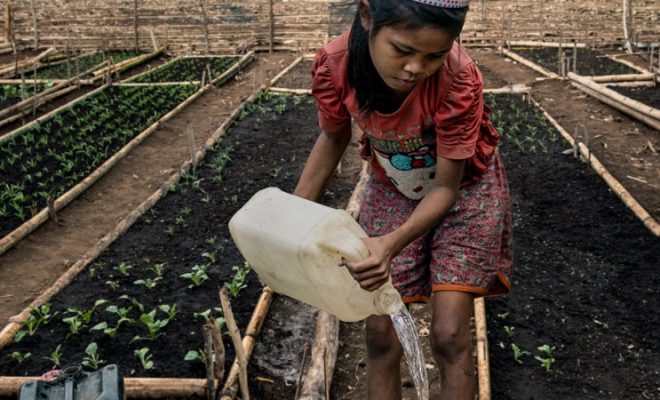Researchers studying biosystems claim we know more about the Moon than we do about the soil beneath our feet. A key reason makes lunar study easier: the Moon is dead. Its analysis is the work of astrophysicists or planetary geologists, not biologists. Since life is absent, no microbiologist studies the Moon.
On Earth, however, research on the life unfolding in the soil has multiplied in recent years. One of the main drivers of this boom is the growing alarm over agricultural soil degradation — a process that worsens droughts linked to climate change. Economists, agronomists, and ecologists agree that soil health is essential not only for feeding the world but also for mitigating climate change. These studies are revealing a crucial and long-overlooked element: fungi.

Deep underground, millions of microorganisms weave what some scientists now call the “soil internet”: a living network that connects roots, exchanges nutrients, regulates moisture, and maintains fertility.
Invisible Underground
When we talk about soil fungi, we’re not referring to the mushrooms we sometimes see sprouting in forests. Mushrooms are merely the visible, reproductive “fruit” of certain fungi. In reality, the main body of the fungus resides underground as a microscopic network of filaments known as mycelium. This mycelium is the true fungal organism, and it plays a vital role in soil life: it connects roots, breaks down organic matter, and helps retain moisture.
It’s estimated that a single handful of soil can contain around one billion bacteria and fungi. These fungi are invisible, forming an underground network that some scientists compare to a “soil internet,” because it connects entire ecosystems and helps maintain underground balance.
We recommend following the work of Tom Shimizu’s team at the AMOLF Institute — a milestone in understanding the fungal micro-world. Their research combines physics, biology, and advanced modelling to observe how soil fungi organise themselves, interact, and respond to their environment.

Suillus luteus and other mycorrhizal fungi live in symbiosis with roots, guiding them in the search for water and nutrients, and assisting during periods of drought.
Plants Owe Them Their Lives
This is how we can summarise what many scientists are now confirming about soil fungi — especially mycorrhizal fungi, which are key to plant health:
- They live in symbiosis with roots. They guide them in the search for water and nutrients and assist them during droughts.
- They regulate soil moisture. A critical function for vegetation in dry and semi-arid lands, especially important for rainfed crops.
- They are vulnerable. Extremely sensitive to pesticides, herbicides, and chemical fertilisers. When applied intensively, these products destroy the fungi.
- They restore the land. They optimise many regenerative farming practices already being implemented worldwide.
Rainfed Agriculture Feeds the World
A crucial part of the research on fungi focuses on their role in the health of soils where rainfed crops grow. According to the FAO, in 2012, nearly 80% of the world’s cultivated land was rain-fed, and this proportion has remained stable over the past decade.
That’s over 1.5 billion hectares producing approximately 60% of the staple foods consumed globally — such as wheat, maise, barley, legumes, and millet.
Today, more than 2.5 billion people depend directly on these crops for their food, particularly in Sub-Saharan Africa, Central Asia, the Mediterranean Basin, Latin America, and the semi-arid regions of southern Europe.
In these areas, soil health becomes a critical factor: crops depend entirely on underground ecological balance and rainfall, with no irrigation systems. This vegetation is more vulnerable to climate change and, in most cases, is tightly linked to small-scale, family-based, and low-income farming.

Today, more than 2.5 billion people depend directly on dryland crops for their food, particularly in Sub-Saharan Africa, Central Asia, the Mediterranean Basin, Latin America, and the semi-arid regions of southern Europe.. © pexels-deesarkee
The Dead Soils of Industrial Agriculture
In contrast to traditional farming systems that rely on ecological soil balance, industrial agriculture has accelerated global soil degradation. The intensive use of pesticides, herbicides, and chemical fertilisers has disrupted the biological processes that sustain underground life, especially the mycorrhizal fungal network.
These products, designed to maximise short-term yield, kill pests — but also beneficial microorganisms — turning soils into inert, compacted substrates that can no longer retain water or properly nourish plants. This is what many scientists and farmers now refer to as “dead soils.”
Intensive tillage and the disappearance of vegetation cover worsen the situation. Without ground cover, soil is exposed to erosion, evaporation, and loss of organic matter. As a result, it loses its capacity to act as a sponge, a filter, and a home for billions of invisible organisms that are key to natural fertility.
Paradoxically, these systems demand more water and energy to sustain productivity, creating a vicious cycle that, in many regions, has become unsustainable: the more soil degrades, the more expensive cultivation becomes, and the less resilient it is to climate change.
Regenerative Agriculture: More Life, More Yield
In response to the depletion caused by industrial agriculture, thousands of farmers worldwide are adopting regenerative practices that harness the power of soil life. Far from being a rural utopia, this approach is supported by scientific studies — such as those mentioned above — demonstrating that healthy soils, rich in mycorrhizal fungi and microorganisms, enhance medium- and long-term productivity, particularly in rainfed systems.
This happens for several reasons:
- They improve water infiltration and retention, reducing the need for irrigation and the impact of droughts.
- They enhance biodiversity by providing safe habitats for pollinating insects, earthworms, bacteria, birds, and wild plants.
- They sequester carbon in the soil, helping to mitigate climate change.
- They reduce the need for agrochemicals by strengthening natural fertility and biological control cycles.
- They stabilise production in extreme weather conditions, increasing crop resilience.
As we wrote recently, there’s nothing new to invent. The solutions already exist: communities around the world are regenerating soils, protecting water, farming without harm, and restoring ecosystems by combining ancestral wisdom with scientific knowledge.
In all our projects supporting agriculture in the world’s most climate-challenged regions, we’ve seen it firsthand: food systems based on soil life are also the most resilient, equitable, and sustainable.
Fungi research is showing us why.





